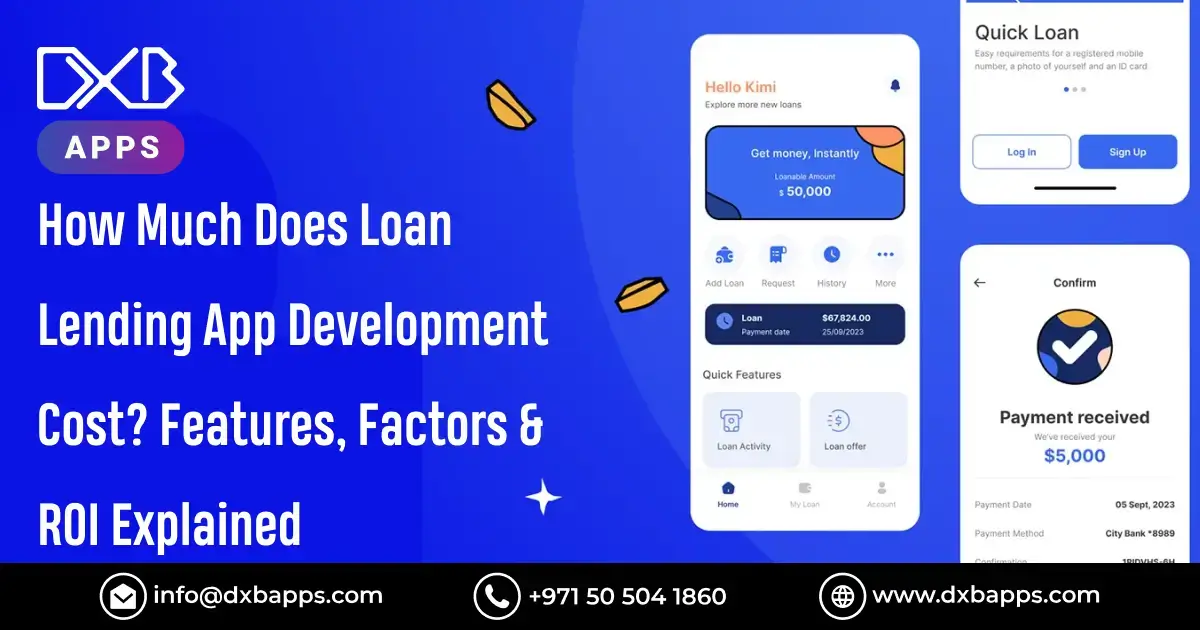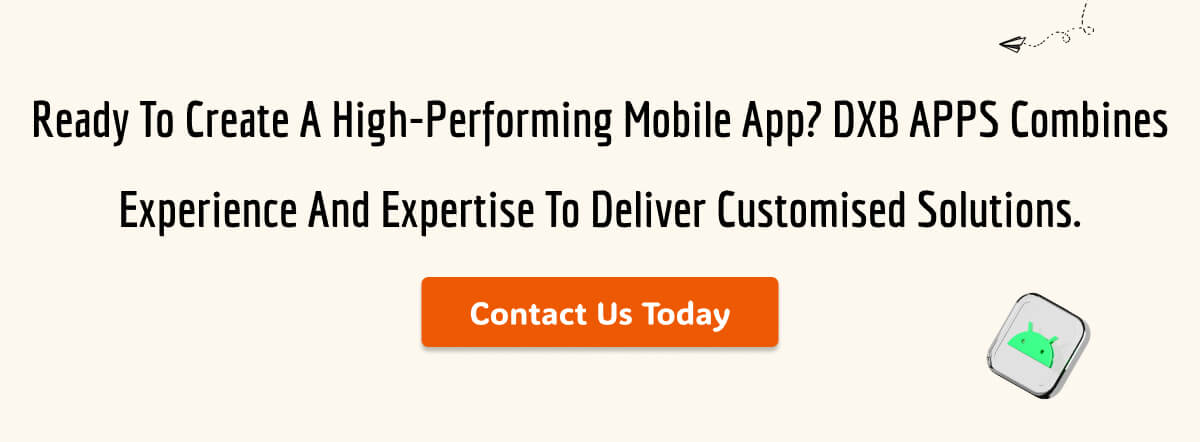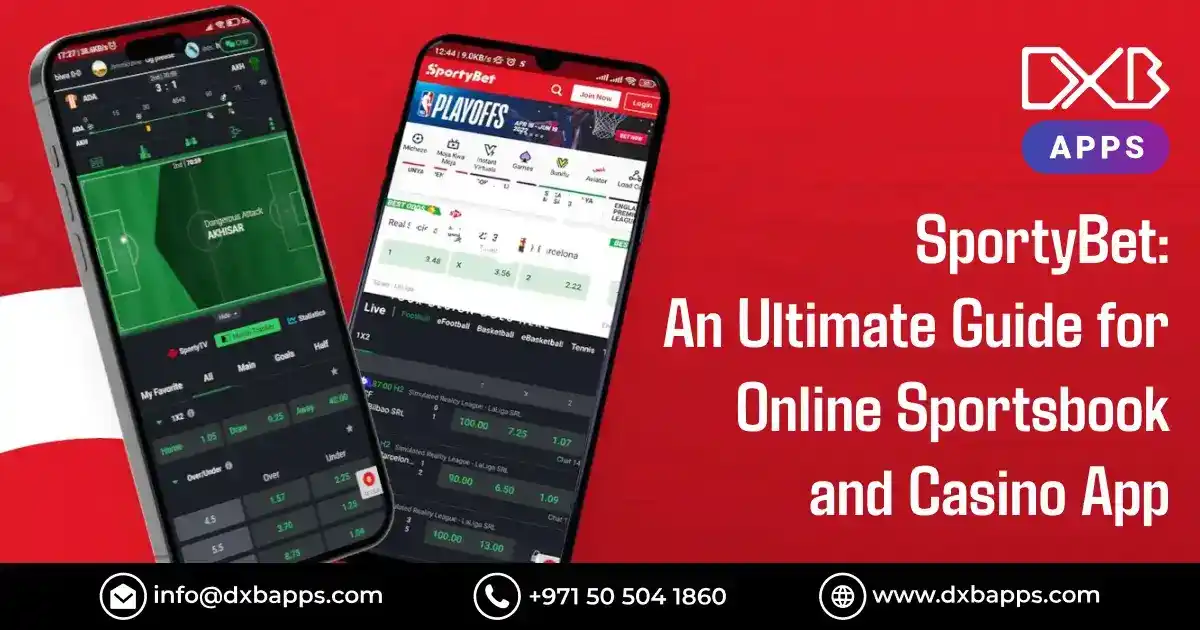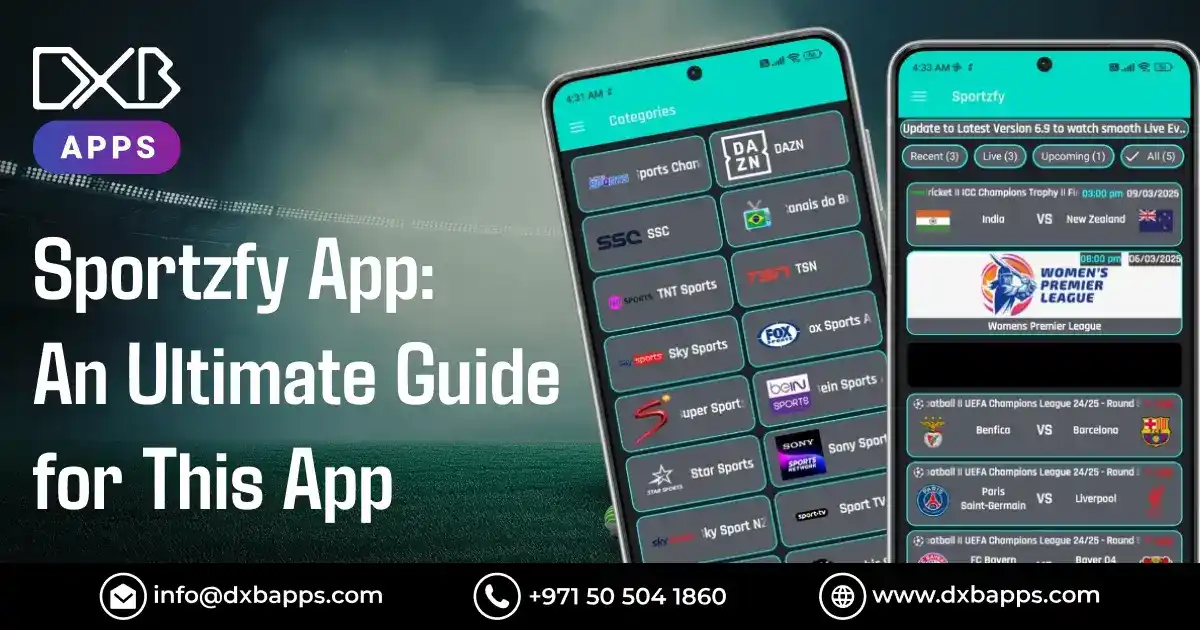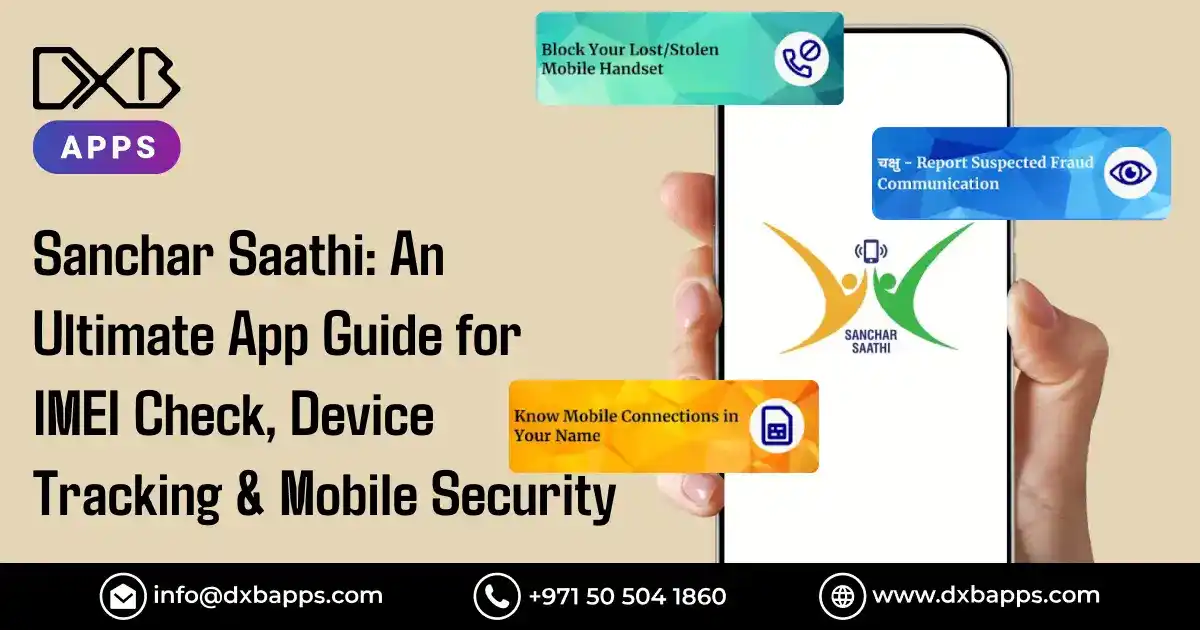The UAE financial technology industry is booming. Most companies desire to establish their own loan lending platforms. The Loan Lending App Development Cost assists companies in making correct investment decisions. The following guide contains information about all the factors that influence pricing.
Development of a successful lending app is impossible without planning and budgeting. The loan app development cost is not fixed and relies on numerous different variables. These variables are features, technology solutions, and developers' locations. Intelligent businesses study these costs prior to launching their projects.
Relevant Statistics on Loan App Development
The following are relevant facts regarding the lending app market:
- The international lending app economy will be worth $43.2 billion in 2026
- Mobile lending apps have 40% higher user interaction than standard ones
- UAE fintech industry expanded 35% over the previous two years
- Custom lending applications can save processing time by up to 80%
Basic Development Costs
Fintech app development price is determined based on complexity levels. Basic loan apps with minimal features are priced between $15,000 and $30,000. Medium-complexity apps are priced between $30,000 and $60,000. Complex lending platforms are priced between $60,000 and $150,000 or even higher.
Different factors dictate the final pricing model. Where the development team is located significantly affects the cost. Mobile lending app UAE initiatives require local understanding and compliance with local laws. This can substantially impact the total budget.
Market Trends and User Expectations
The lending app business is still developing with shifting user preferences and emerging technologies. The latest users seek instant approval of the loans and seamless user experience. Development costs increase while taking advantage of advanced AI and machine learning features for enhanced decision making.
Current Market Expectations:
- Fast 60-second pre-approval decisions
- Complete loan processing in 24 hours
- Digital wallet and payment channel integration
- Live customer support through chatbots
Platform Choice and Its Cost
Platform selection, whether iOS, Android, or cross-platform, is an efficient measure to determine the cost. Native app development on each platform involves individual codebases and development teams. Cross-platform alternatives such as React Native or Flutter minimize costs by 30-40% without an impact on the performance.
Platform Development Costs:
- Native iOS development: $25,000 - $80,000
- Native Android development: $25,000 - $80,000
- Cross-platform development: $20,000 - $60,000
Premium Features and High-End Functionalities
The essential features for a loan app go beyond the core lending functionality in the competitive market. Advanced features such as AI-based risk assessment and auto document validation enhance development cost but enhance user experience.
Machine learning algorithms for credit scoring demand niche expertise and more development hours. The UAE does tend to offer tailored Dubai fintech app development with these premium features to satisfy the needs of the market.
Premium Feature Categories:
- Combination of Artificial Intelligence and Machine Learning
- Enhanced analytics and reports dashboards
- International users supported via multi-currency support
Investment in Quality Assurance and Testing
Full-cycle testing stages play a vital role in fintech application development projects. Financial apps need end-to-end security testing, performance tuning, as well as acceptance by users. Quality assurance generally accounts for 20-25% of overall development expenses.
Custom loan app development in UAE needs to be tested extensively to ensure regulatory compliance and user satisfaction. Security sweeps, manual testing protocols, and automated test suites guarantee application stability and regulatory compliance.
Real-user beta tests create constructive feedback on enhancements and feature requests. Taking this measure guarantees that usability problems and performance bottlenecks are eliminated before launch time, lowering the cost of support after launch and user dissatisfaction.
Components of the Testing Phase:
- Functional testing of all application functionality
- Security testing and vulnerability scans
- Heavy user load performance testing
- Compatibility testing across devices and platforms
- User acceptance testing with target users
- Compliance verification and audits for regulatory compliance
"Smart investment in fintech app development today generates sustainable streams of income for business success tomorrow."
Key Features That Determine Pricing
Most critical functionalities of a loan app directly influence development expenses. Features of loan apps in UAE and profile management modules take up large amounts of development time. Secure payment methods and transaction processing increase complexity and expenditure in projects.
Credit scoring integration and risk assessment attributes are the primary attributes. These attributes need sophisticated algorithms and third-party API integrations. Companies may need to spend time developing such sophisticated systems. Integration is a professional developer process and needs extra testing cycles.
The Primary Features Are:
- User authentication and user profile management systems
- Workflow of loan application and approval procedures
- Processing transactions and managing transaction history
- Credit analysis and risk assessment software
- Document upload and authentication mechanisms
- Customer care and communication functionality
Technology Stack Implication on Costs
The technology stack choice makes a significant contribution to development expenses. Native iOS and Android app development is more expensive than cross-platform apps. Native apps, however, deliver improved performance and user experience.
Backend development calls for robust server frameworks and database management systems. Cloud hosting options include the added cost of monthly operations in the project cost. Security protocols and encryption policies need to be implemented in financial applications.
Common Technology Options:
- Frontend: React Native, Flutter or native development.
- Backend: Node.js, Python Django or Java Spring.
- Database: postgreSQL, MongoDB, or MySQL databases.
- Cloud: AWS, Google Cloud, or Microsoft Azure platforms.
Regulatory Compliance and Security Costs
Loan apps in UAE have to adhere to local money laundering laws. Central Bank of UAE has stringent guidelines for fintech applications. Compliance involves extra development time and expertise cost.
Security aspects are non-negotiable with money apps. Encryption of data, authentication security, and fraud protection systems involve extra spending. Fintech regulations in UAE dictate certain security controls and audits.
Development Team Structure and Pricing
A normal development team comprises project managers, UI/UX designers, and programmers. Backend developers, mobile developers, and quality assurance engineers are mandatory. Development needs finance industry experts.
Team size and project duration have direct cost implications. Local development teams at a top mobile app development company understand UAE market demands better. The app development providers offer cost-effective solutions with minimal harm to quality levels.
Team Structure Costs:
- Project Manager: $4,000 - $8,000 per month
- UI/UX Designer: $3,000 - $6,000 per month
- Senior Developers: $5,000 - $10,000 per month
- Quality Assurance: $2,500 - $5,000 per month
Return on Investment Analysis
App development ROI is high for lending apps. Highly designed apps lower the cost of operations and maximize customer acquisition. Mobile banking in UAE has potential growth with healthy adoption by customers.
Revenue streams include loan processing fee, premium feature subscription, and commission from partnership. Payback time for lending apps is typically 18 to 36 months. Market research indicates that successful apps can recover the development cost within two years.
Third-Party Integration Costs and Considerations
Existing loan apps involve several third-party integrations to operate efficiently. Payment gateways, SMS platforms, email service providers, and credit bureau integrations contribute both development complexity and operational expenses on a daily basis. Apps generally utilize local and international service providers.
Every integration is inclusive of API connection development hours, testing and maintenance of the integrations. Popular gateways like PayPal, Stripe or local UAE providers charge between 2.5 to 4% per transaction. Such recurring charges must be factored in the overall cost of the project and the project revenue projections.
UAE fintech regulations do entail some integrations with authorized data providers and regulatory reporting systems. These are compulsory integrations that facilitate compliance but contribute to project development time and expenditures.
Most Popular Third-Party Integrations:
- Electronic wallet facilities and payment processing
- SMS and email alert systems
- Credit bureau services and identity verification services
- Cloud storage and backup solutions
- Analytics and user behavior analysis tools
- Customer support and helpdesk systems
User Experience Design and Interface Costs
Professional UI/UX design has a material impact on ROI through improved user interaction and conversion rates. Well-designed interfaces reduce user abandonment and increase loan application completion rates. Design costs tend to vary from $5,000 to $20,000 depending upon complexity.
UAE loan apps must consider local culture trends and language requirements. User research and iterative design improvement occupy a significant amount of project time but improve post-launch user satisfaction ratings.
Design Process Components:
- User studies and market research questionnaires
- Interactive prototyping and user flow mapping
- Visual design and branding integration
Scalability Planning and Future-Proofing
Future expansion planning impacts initial costs but yields long-term gains in terms of lower redevelopment costs. Scalable architecture enables expanding user bases without complete-system remaking. Cloud technology provides scalable options with pay-as-you-grow payment schemes.
Database schema, server organization, and API design need to be implemented for future growth of features and users. Scalable solution experts suggest making an investment in scalable solutions from the very start instead of revamping systems in the future.
Microservices architecture, containerization, and cloud-native development approaches have higher initial costs but allow room for future evolution and expansion. Such architectural decisions significantly influence long-term operating expense and development productivity.
Regional Competition and Market Positioning
Identifying competitive space assists in defining feature needs and priorities' budgeting. UAE loan requests compete with local startups and global fintech giants. Market study determines where existing solutions fall short and where differentiation is needed.
Competitive benchmarking dictates price strategy, feature sets, and levels of user experience. This dictates development priorities and acts as a starting point for investment in technology or features. Premium positioning is greater development investment but can drive greater levels of user acquisition and retention.
Market Research Elements:
- Competitor feature comparison and comparison studies
- Pricing strategy research and market positioning
- User review analysis and satisfaction surveys
- Market gap identification and opportunity assessment
- Regulatory compliance comparison between competitors
- Technology stack review and performance criteria
How to integrate a Credit Score in a Loan App UAE?
Implementation involves integration with recognized credit bureaus. It comprises API integration with Emirates Credit Bureau and similar recognized agencies. Integration costs $5,000 to $15,000 depending on complexity.
Credit Integration Process:
- Setup of API connection to credit bureaus
- Systems used to pull credit scores in real time
- Development of risk assessment algorithm
- Compliance with data protection law
What is the Cost to Build a Mini Loan App?
The cost to build a mini loan app is generally less than full-service lending sites. Simple mini loan apps are around $10,000 to $25,000 for basic features. They are centered on low loan sizes with straightforward approval procedures.
Maintenance and Recurring Costs
Post-launch maintenance amounts to 15-20% of the initial development expense every year. Periodic updates, security patches, and feature updates are needed. Server hosting, third-party charges, and compliance audits are other operational costs.
Bug resolution, performance optimizations, and user assistance are continuous needs. Market changes and regulatory requirements may need application updates. Keeping funds in reserve for these costs ensures long-term application viability and sustainability.
Annual Maintenance Includes:
- Software updates and security patches
- Server hosting and cloud service fees
- Third-party API and service plans
- Performance tracking and improvement
How DXB APPS Develops the Best Mobile Applications in UAE?
DXB APPS is a leading mobile app development company in UAE offering top mobile app development Dubai services Our experienced mobile app developers provide a mix of market knowledge and app development expertise. We are specialists in designing out-of-the-box applications that generate business growth and user engagement.
Our end-to-end service involves web development Dubai and app development Dubai. We work with customers in order to meet their specific needs and issues within the market. Our development process provides quality applications based on international standards and local compliance.
Conclusion
Knowledge of development costs supports making smart investment choices. Pricing is determined by several elements ranging from features to technology adoption and team organization. Effective planning and expert advice lead to effective projects and positive investment yields.
FAQs
How long, on average, does it take to develop a loan lending app?
The majority of loan apps typically take 4-8 months to develop, depending on features and levels of complexity.
Do I have to obtain special licenses to run a lending app in UAE?
Yes, you will require financial service licenses from UAE Central Bank and respective authorities.
Am I able to begin with a minimal version and include more features later?
Definitely, MVP development enables you to release early and include features dependent on customer input.

